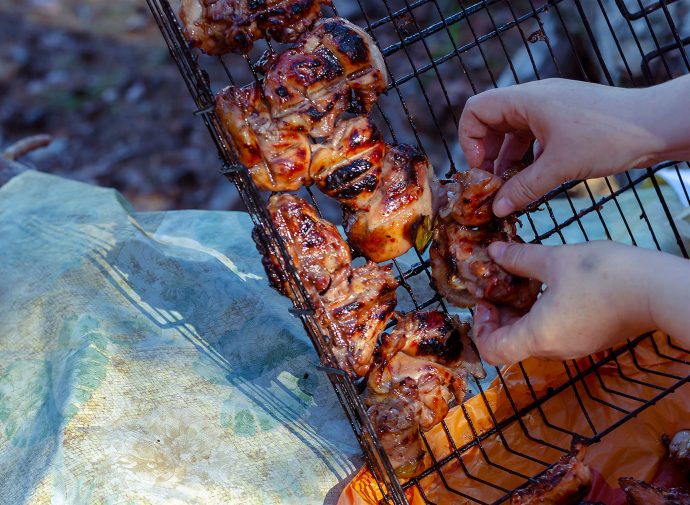Chicken thighs can be cooked on the stovetop, in the oven, in a pressure cooker, a tagine, a donabe or on the grill. They can be braised, oven-roasted, deep-fried, stir-fried, pan-fried, poached, or charcoal-grilled. Their seasonings can take you around the world, from Japan to Morocco, the Eastern Mediterranean to South Asia and the Far East, from Spain to Latin America and the Caribbean. Vast arrays of side dishes work well—rice pilafs, roasted pumpkin or potatoes, fall mushrooms, winter vegetable gratins, grilled corn, green papaya salad, plantains, or sweet potato fries.
Roasting a whole chicken used to be my favorite preparation. The Cook’s Gazette issue on vertically roasting a chicken has been read more times than any other recipe on the website. However, during the pandemic, when trips to the market were less frequent, it was easier to freeze and store chicken thighs. In addition, that’s always been my favorite part of the bird.
Chicken thighs can be purchased in almost any market, sold either bone-in and skin on, boneless-skinless, or as ground dark meat. Whenever possible, I prefer to buy organic chicken. It tastes better, it’s better for the chicken, and for the environment. Often, recipes call for bone-in, skinless thighs, so I pull off the skin for other uses like gribenes or Japanese chicken skin salad. In traditional yakitori restaurants, the skin, brushed with sauce and cooked on the grill, is a choice treat. You can also freeze the flavorful skin for the next time you are making stock. If boneless thighs are not available, it’s not difficult to bone the thigh yourself. If you have room in your freezer, you can also save the bones for stock.
N.B. As I was working on this issue, I saw a video by Pailin Congchitnant on Patreon. It was titled “Why you should overcook chicken thighs”. Chicken thighs, like breasts, are safe to eat at 165°. Unlike chicken breasts, instead of getting dry, they get more tender and juicier, and the meat comes cleanly off the bone, when the internal temperature rises to 175° or above. This is excellent advice.
NEXT ARTICLE: ROASTED CHICKEN THIGHS
